Mahesh Pal
SAR and Optical data fusion based on Anisotropic Diffusion with PCA and Classification using Patch-based with LBP
Jan 20, 2021

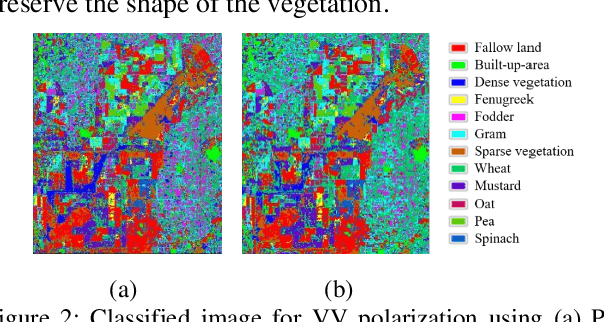
Abstract:SAR (VV and VH polarization) and optical data are widely used in image fusion to use the complimentary information of each other and to obtain the better-quality image (in terms of spatial and spectral features) for the improved classification results. This paper uses anisotropic diffusion with PCA for the fusion of SAR and optical data and patch-based SVM Classification with LBP (LBP-PSVM). Fusion results with VV polarization performed better than VH polarization using considered fusion method. For classification, the performance of LBP-PSVM using S1 (VV) with S2, S1 (VH) with S2 is compared with SVM classifier (without patch) and PSVM classifier (with patch), respectively. Classification results suggests that the LBP-PSVM classifier is more effective in comparison to SVM and PSVM classifiers for considered data.
IRX-1D: A Simple Deep Learning Architecture for Remote Sensing Classifications
Oct 08, 2020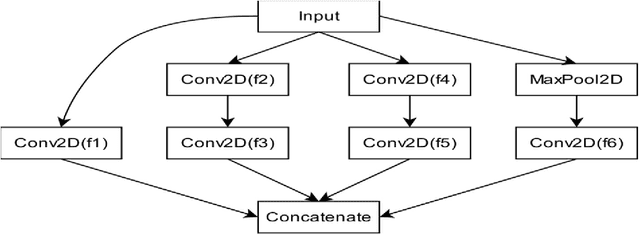


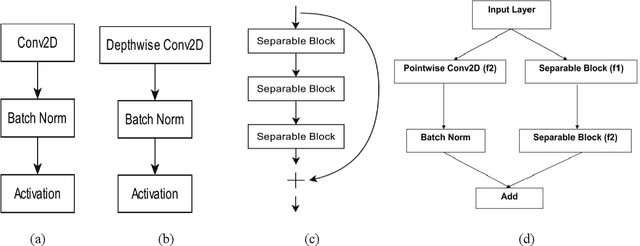
Abstract:We proposes a simple deep learning architecture combining elements of Inception, ResNet and Xception networks. Four new datasets were used for classification with both small and large training samples. Results in terms of classification accuracy suggests improved performance by proposed architecture in comparison to Bayesian optimised 2D-CNN with small training samples. Comparison of results using small training sample with Indiana Pines hyperspectral dataset suggests comparable or better performance by proposed architecture than nine reported works using different deep learning architectures. In spite of achieving high classification accuracy with limited training samples, comparison of classified image suggests different land cover classes are assigned to same area when compared with the classified image provided by the model trained using large training samples with all datasets.
Patch Based Classification of Remote Sensing Data: A Comparison of 2D-CNN, SVM and NN Classifiers
Jun 21, 2020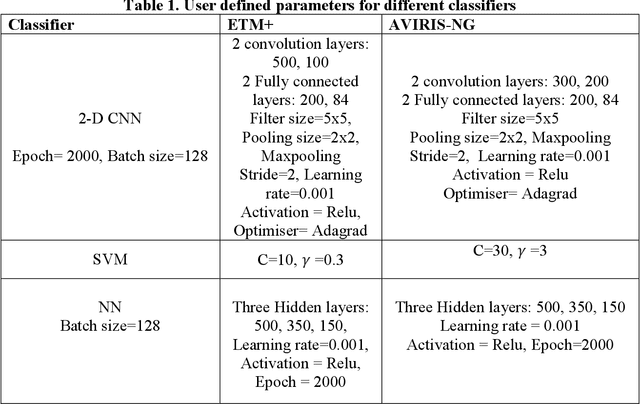
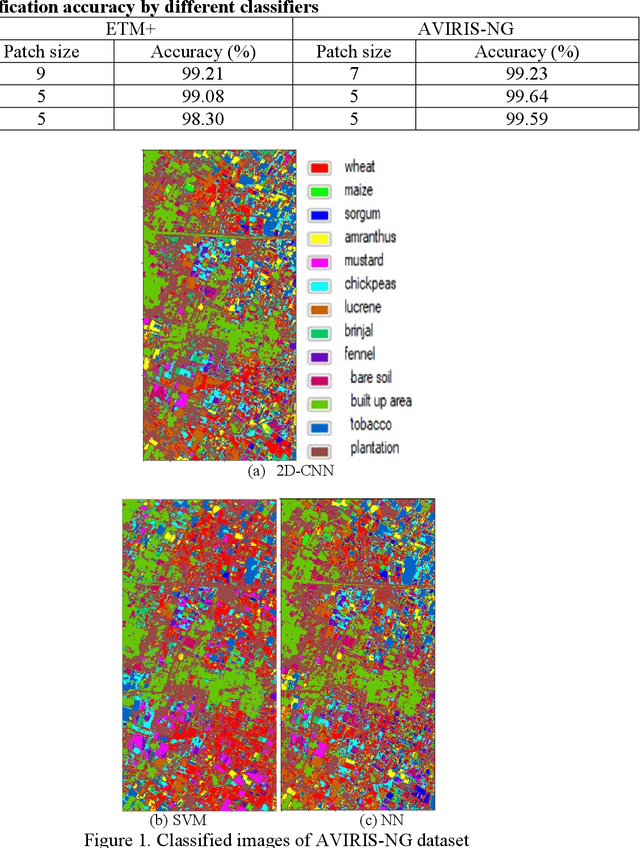
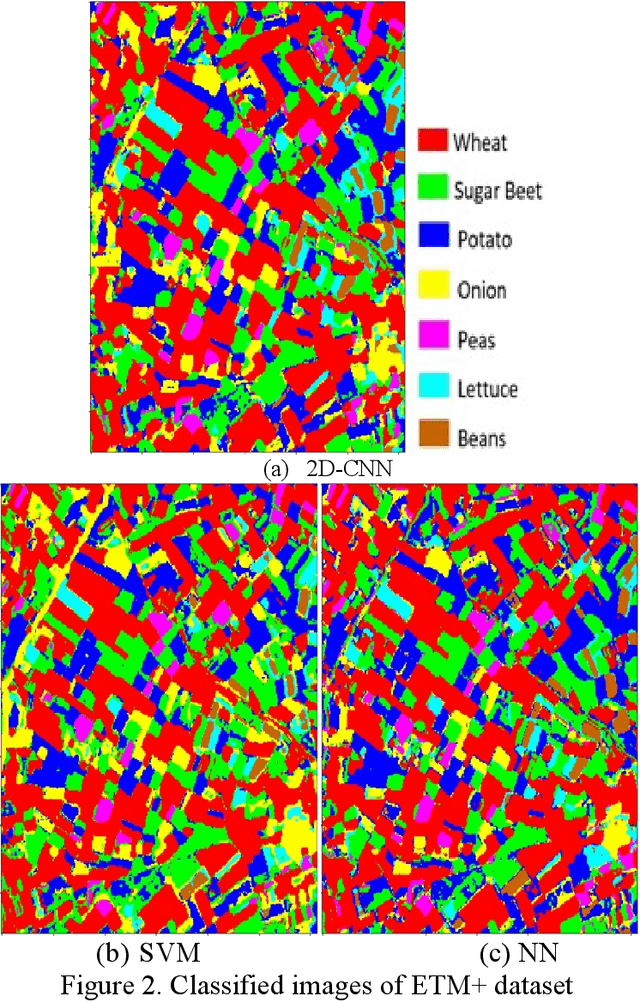
Abstract:Pixel based algorithms including back propagation neural networks (NN) and support vector machines (SVM) have been widely used for remotely sensed image classifications. Within last few years, deep learning based image classifier like convolution neural networks (2D-CNN) are becoming popular alternatives to these classifiers. In this paper, we compare performance of patch based SVM and NN with that of a deep learning algorithms comprising of 2D-CNN and fully connected layers. Similar to CNN which utilise image patches to derive features for further classification, we propose to use patches as an input in place of individual pixel with both SVM and NN classifiers. Two datasets, one multispectral and other hyperspectral data was used to compare the performance of different classifiers. Results with both datasets suggest the effectiveness of patch based SVM and NN classifiers in comparison to state of art 2D-CNN classifier.
Deep neural network for pier scour prediction
Oct 09, 2019



Abstract:With the advancement in computing power over last decades, deep neural networks (DNN), consisting of two or more hidden layers with large number of nodes, are being suggested as an alternate to commonly used single-hidden-layer neural networks (ANN). DNN are found to be flexible models with a very large number of parameters, thus making them capable of modelling very complex and highly nonlinear relationships existing between inputs and outputs. This paper investigates the potential of a DNN consisting of 3 hidden layers (100, 80 and 50 nodes) to predict the local scour around bridge piers using field data. To update the weights and bias of DNN, an adaptive learning rate optimization algorithm was used. The dataset consists of 232 pier scour measurements, out of which a total of 154 data were used to train whereas remaining 78 data to test the created model. A correlation coefficient value of 0.957 (root mean square error = 0.306m) was achieved by DNN in comparison to 0.938 (0.388m) by ANN, indicating an improved performance by DNN for scour depth perdition. Encouraging performance on the used dataset in the work suggests the need of more studies on the use of DNN for various civil engineering applications.
Support vector machines/relevance vector machine for remote sensing classification: A review
Jan 15, 2011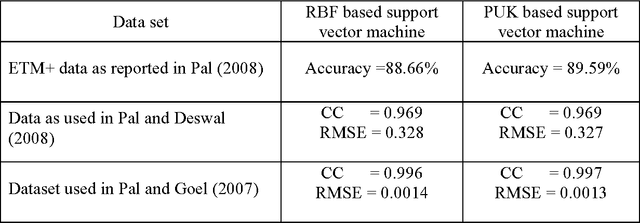
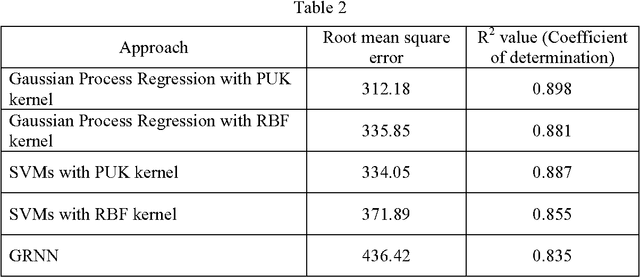
Abstract:Kernel-based machine learning algorithms are based on mapping data from the original input feature space to a kernel feature space of higher dimensionality to solve a linear problem in that space. Over the last decade, kernel based classification and regression approaches such as support vector machines have widely been used in remote sensing as well as in various civil engineering applications. In spite of their better performance with different datasets, support vector machines still suffer from shortcomings such as visualization/interpretation of model, choice of kernel and kernel specific parameter as well as the regularization parameter. Relevance vector machines are another kernel based approach being explored for classification and regression with in last few years. The advantages of the relevance vector machines over the support vector machines is the availability of probabilistic predictions, using arbitrary kernel functions and not requiring setting of the regularization parameter. This paper presents a state-of-the-art review of SVM and RVM in remote sensing and provides some details of their use in other civil engineering application also.
* 19 pages
Multiclass Approaches for Support Vector Machine Based Land Cover Classification
Feb 18, 2008
Abstract:SVMs were initially developed to perform binary classification; though, applications of binary classification are very limited. Most of the practical applications involve multiclass classification, especially in remote sensing land cover classification. A number of methods have been proposed to implement SVMs to produce multiclass classification. A number of methods to generate multiclass SVMs from binary SVMs have been proposed by researchers and is still a continuing research topic. This paper compares the performance of six multi-class approaches to solve classification problem with remote sensing data in term of classification accuracy and computational cost. One vs. one, one vs. rest, Directed Acyclic Graph (DAG), and Error Corrected Output Coding (ECOC) based multiclass approaches creates many binary classifiers and combines their results to determine the class label of a test pixel. Another catogery of multi class approach modify the binary class objective function and allows simultaneous computation of multiclass classification by solving a single optimisation problem. Results from this study conclude the usefulness of One vs. One multi class approach in term of accuracy and computational cost over other multi class approaches.
Support Vector classifiers for Land Cover Classification
Feb 15, 2008
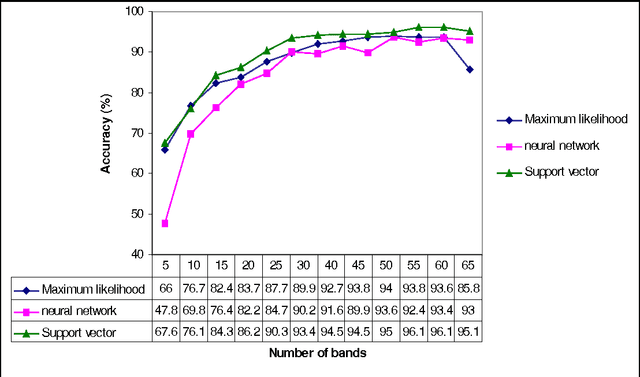

Abstract:Support vector machines represent a promising development in machine learning research that is not widely used within the remote sensing community. This paper reports the results of Multispectral(Landsat-7 ETM+) and Hyperspectral DAIS)data in which multi-class SVMs are compared with maximum likelihood and artificial neural network methods in terms of classification accuracy. Our results show that the SVM achieves a higher level of classification accuracy than either the maximum likelihood or the neural classifier, and that the support vector machine can be used with small training datasets and high-dimensional data.
Extreme Learning Machine for land cover classification
Feb 11, 2008
Abstract:This paper explores the potential of extreme learning machine based supervised classification algorithm for land cover classification. In comparison to a backpropagation neural network, which requires setting of several user-defined parameters and may produce local minima, extreme learning machine require setting of one parameter and produce a unique solution. ETM+ multispectral data set (England) was used to judge the suitability of extreme learning machine for remote sensing classifications. A back propagation neural network was used to compare its performance in term of classification accuracy and computational cost. Results suggest that the extreme learning machine perform equally well to back propagation neural network in term of classification accuracy with this data set. The computational cost using extreme learning machine is very small in comparison to back propagation neural network.
 Add to Chrome
Add to Chrome Add to Firefox
Add to Firefox Add to Edge
Add to Edge